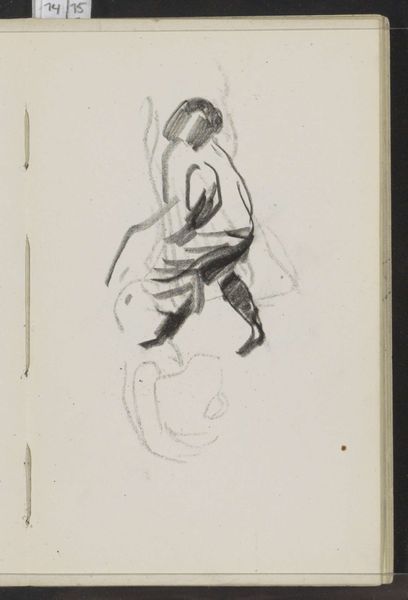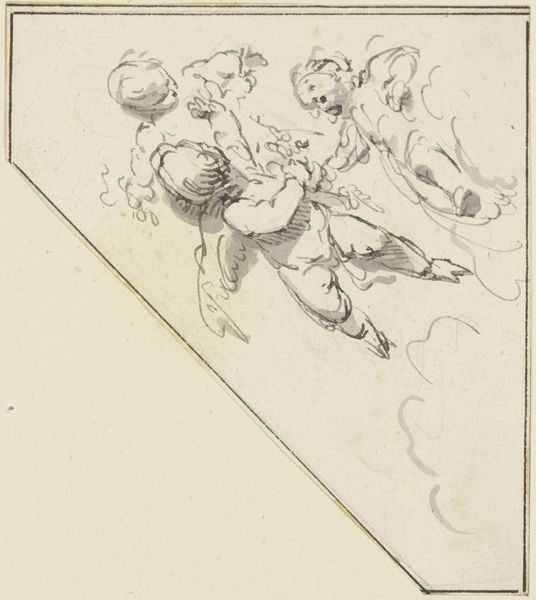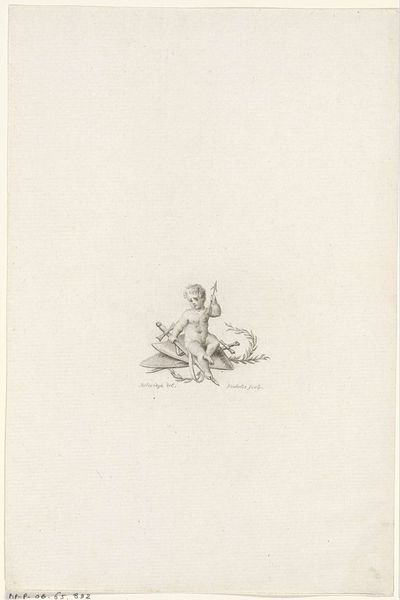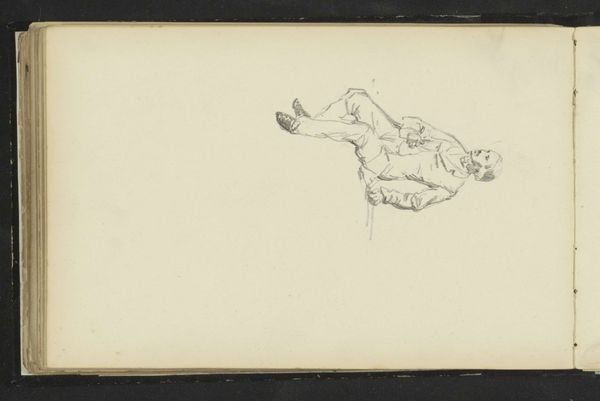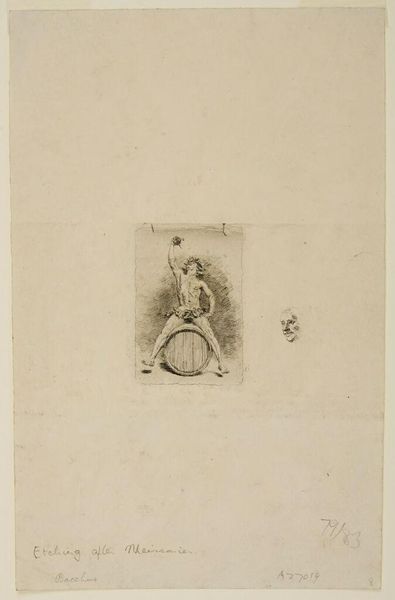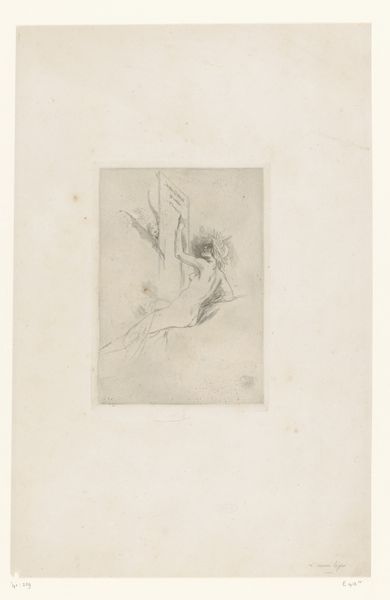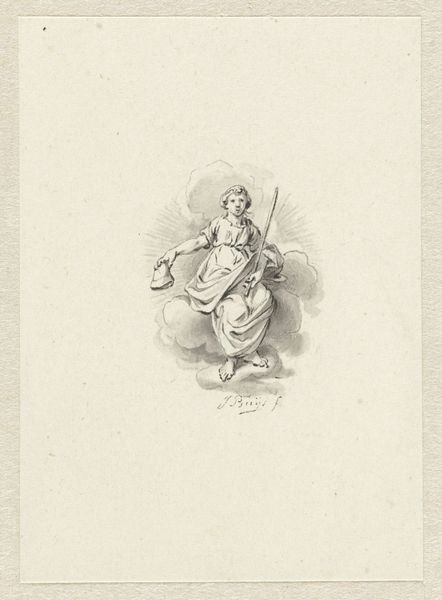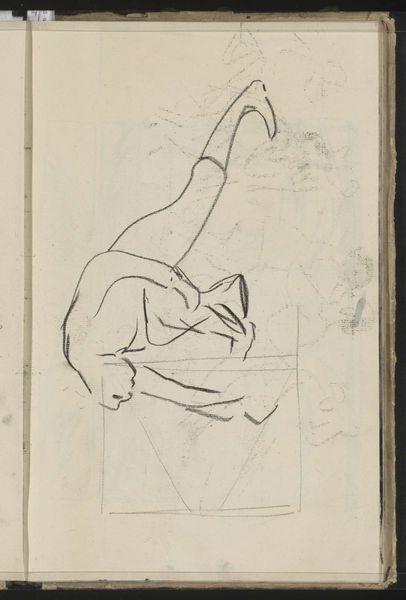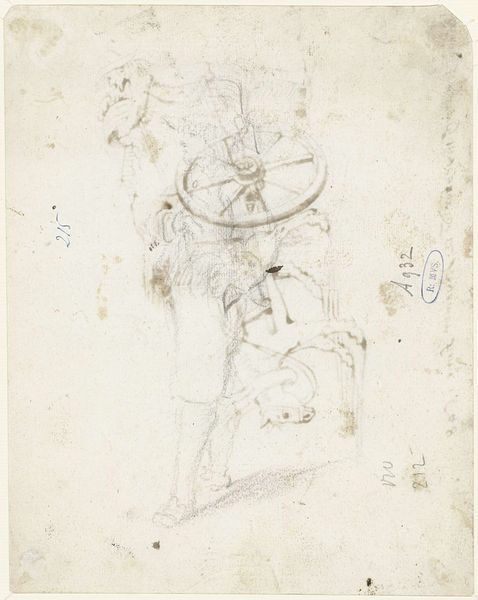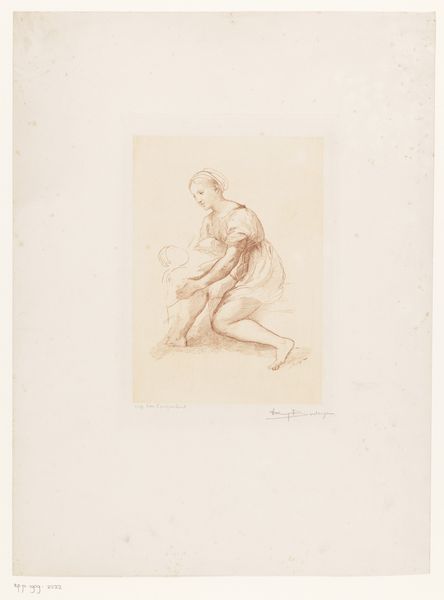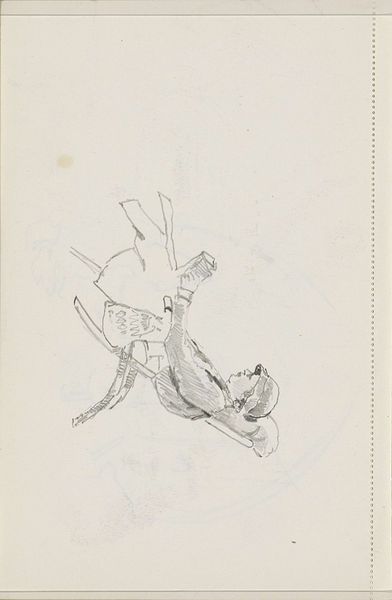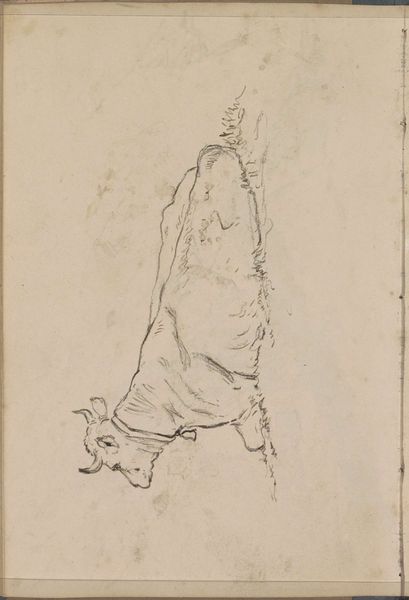
En nøgen knælende mand, der symboliserer Bartholomæusnatten 1778 - 1779
0:00
0:00
drawing, pencil
#
drawing
#
allegory
#
figuration
#
pencil
#
history-painting
#
academic-art
#
nude
Dimensions: 94 mm (height) x 85 mm (width) (bladmaal)
Curator: I feel the sheer terror of history bearing down on me in this sketch. The urgency in the lines, the raw emotion… Editor: Agreed. And welcome! Here we have a drawing by Nicolai Abildgaard, created between 1778 and 1779. It’s titled "A naked kneeling man, symbolizing the St. Bartholomew's Night." Abildgaard rendered it in pencil. Curator: Symbolizing, yes, but really *reliving*. Look at the man's contorted pose. He clutches that cloth—is it a shroud, a desperate veil?—while wielding a knife. There’s madness in the asymmetry of his arms. It whispers the chaos, the fever pitch of religious fanaticism. The horror of the event must have been a weight on the collective psyche. Editor: Precisely. The artist employs a somber palette – limited to grayscale values in the pencil medium. This starkness emphasizes the raw emotional power that you've so perfectly articulated. Note also the strategic use of line weight. The dense shading around the figure amplifies his emotional turmoil, drawing the viewer into his inner world. Curator: It's interesting how he grounds him—or perhaps *un*grounds him—on what looks like a bed of tumultuous cloud. As if to suggest the event's transcendence over any physical place. Like evil made manifest, sprung from some nether realm. The history-painting themes from that time often put subjects high on a pedestal. Here, we don't get to rest. Editor: Abildgaard has framed the subject within strict vertical and horizontal guidelines that enhance that feeling of something being unearthed, disturbed. Consider, too, that even with these obvious boundaries of the composition and drawing, Abildgaard has still given this harrowing moment his unmistakable flourish by highlighting the stark and brutal impact with such a raw, honest expression. It stands as a very mature artistic statement. Curator: An arresting collision of the earthly and the divine, I think. One can easily read, even with only line art, his feelings toward this historical and philosophical moment in history, using a nude figure as more of a question about religious belief than it is a statement about the state. It reminds us the power of artistic voices throughout history. Editor: A fitting conclusion, emphasizing not just the artist’s technical mastery but the deeply human questions he provokes. This drawing truly embodies an immediacy and presence despite its age. Thank you for joining us!
Comments
No comments
Be the first to comment and join the conversation on the ultimate creative platform.

